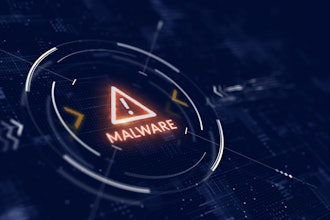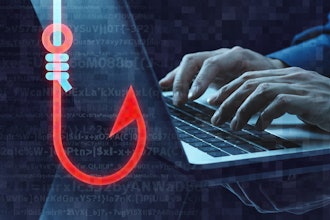
These days, businesses are heavily dependent on digital infrastructure, and the threat of ransomware attacks loom larger than ever. Cybercriminals are continuously evolving their tactics, and the consequences of a successful ransomware attack could be devastating. These malicious campaigns have become a lucrative business for cybercriminals, targeting organizations of all sizes. The results extend beyond financial demands, affecting reputation, data security and business continuity.
Understanding the cost and commitment of ransomware attacks is vital for organizations in today's cyber threat landscape. Below are some of the real-time scenarios of ransomware.
- Steady Surge: The number of ransomware attacks has steadily increased, affecting businesses, government agencies, and critical infrastructure.
- Sophisticated Tactics: Cybercriminals have become more sophisticated, using advanced malware and social engineering to exploit vulnerabilities.
- High Financial Impact: The financial impact of ransomware attacks has also soared, with the average ransom demand reaching hundreds of thousands of dollars.
Prevention Strategies
Here are some strategies to help you avoid ransomware attacks.
- Regular backups: One of the most effective prevention strategies. If someone threatens you for having something that you can restore, then there’s a high possibility that there’s nothing to worry about. However, please ensure that backups are stored securely and regularly test the restore process to guarantee reliability.
- Patch and Update: Keep software, operating systems, and security tools current. Many ransomware attacks target known vulnerabilities that can be patched with updates.
- Employee training: Educate your employees about the dangers of phishing emails and the importance of verifying the authenticity of requests for sensitive information.
- Network Segmentation: Implement network segmentation to limit lateral movement for cybercriminals. Isolate critical systems from less secure parts of your network.
- Security software: Invest in good antivirus and anti-malware solutions to detect and prevent ransomware infections.
- Access Control: Implement strong access controls and limit privilege access policies to restrict unauthorized users' access to your systems.
Recovery Strategies
If you are reading this because you have already been a victim of a ransom attack, below is the section you were looking for:
- Deploying a Ransomware Response Plan: To guide the actions in case of a ransomware attack, businesses should have a general-purpose incident response plan(IRP). A ransomware-specific IRP specifies immediate measures for the security operation center (SOC), system admins, and network operations center to take hold of suspected ransomware events. When the attack is confirmed, you should gather the incident response team to evaluate the incident. Then, perform a digital forensics investigation to contain and mitigate the ransomware. Regular drills and tabletop exercises must also be conducted to ensure everyone is on the same table about the plan.
- Triggering Cyber Security Systems: Mitigation processes should be activated once the SOC is alerted of any ransomware attack. Wherever relevant, cyber security should be tightened. If the endpoints behave suspiciously, security teams must ensure the network is automatically segregated, locking in network segments and blocking control and command centers. Automated security mitigation and remediation methods bypass the need for the security teams to stop ransomware manually.
- Restoring Systems To Normal Again: Once the ransomware is stopped and the production system’s safety is evaluated, it is time to resume the business functions. Wipe and restore endpoints after deploying backup data and attempt data recovery after deleting and replacing central system instances. Lastly, scan restored data for any kind of contamination.
- Communication With Collaborators: After resuming normal business functions, businesses should communicate with all the stakeholders, both internal and external. The recovery plan mandates contacting affected parties like employees, leadership, vendors, and decision-makers. The recovery plan needs to define decision points so that the security team knows who to contact based on the contamination's speed. External communication means reporting the attack to law enforcement and government agencies.
- Improvising The Recovery Plan: An after-action report is required to conclude the disaster recovery process—a review of what worked and what didn’t should be documented. Add the new processes you learned during the whole process to the report and remove those that slowed the response efforts. The revised recovery plan thus created should be used in the next round of drills and exercises. Those who fail to plan on the improvisation aspect of the recovery plan are at enhanced risk of future ransomware attacks.
Many organizations rely on third-party vendors and service providers. Here are some of the ways managed third-party risk can help mitigate ransomware threats:
- Regularly assessing cybersecurity measures of your third-party vendors to ensure they meet your standards and have ransomware prevention strategies.
- Collaborating with third-party vendors to create a coordinated incident response plan for a shared ransomware incident - ensuring a swift and effective response to minimize damage.
- Sharing threat intelligence and monitoring your vendors’ networks for any signs of compromise. Timely detection can prevent the spread of ransomware.
- Including strong cybersecurity clauses in vendor contracts, specifying their responsibility for ransomware prevention and their liability in case of a breach.
By implementing these measures, organizations can better defend against ransomware attacks and minimize their impact. Remember, prevention is key, but being well-prepared for recovery is equally important in the fight against ransomware.
Nagaraj Kuppuswamy is the Co-founder and CEO of Beaconer, an enterprise specializing in managed third-party risk using the cloud-native AI-based solution.



















